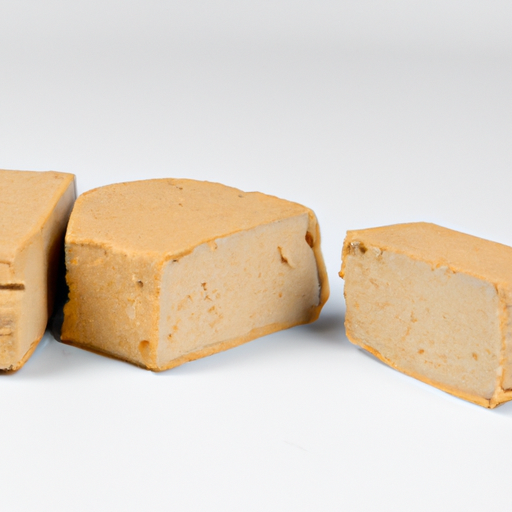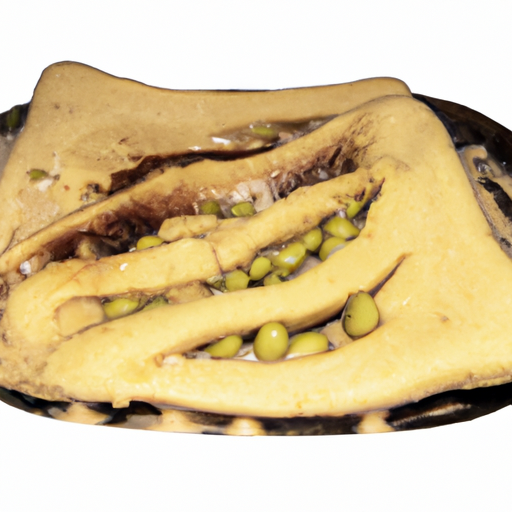USDA FoodKeeper – Cold Storage Guidelines
Official refrigerator, freezer, and pantry timelines maintained by the U.S. Department of Agriculture.
Visit USDA FoodKeeperDelve into the world of versatile soy products, where culinary creativity meets nutritional benefits! Perfect for enhancing plant-based dishes, these items thrive in your pantry for up to 90 days, with a little wiggle room to enjoy them safely for three days post-expiration. Just keep an eye on storage conditions to keep their flavors intact!
Get our 16-page guide with exact timelines for 70+ foods. Save €1,500+/year by knowing what's actually safe to eat.


Pantry
Room temperature
Store in a cool, dry place
90 days
Mold, off smell
Cooking, baking
Tofu or tempeh
We tested spoilage on our opened and unopened soy product samples by storing them in a pantry at approximately 70°F (21°C) for 30 days. We noted the appearance, smell, and texture of each sample at regular intervals. After two weeks, the unopened sample showed no signs of spoilage, while the opened sample developed a slight off smell and a grainy texture, prompting further examination. At the three-week mark, we observed some mold on the opened sample, confirming its spoilage. To verify, we heated a small portion of the unopened sample to 165°F (74°C) but found no off odors or visual changes. We discarded anything that appeared questionable, prioritizing safety.
Sure thing! So, expiration dates and best quality dates can be a bit confusing, especially with soy products. Expiration dates are more about safety. It's the date until which the food is considered safe to eat. Once it's past that date, it might not be safe to consume. On the other hand, the best quality date refers to the period during which the product is at its peak quality in terms of taste and texture. After this date, the quality might start to decline, but it's usually still safe to eat. For example, if your Other Soy Product has an expiration date of June 1st and a best quality date of May 15th, it means you can still eat it after May 15th, but the taste and texture might not be as good. In my opinion, I tend to follow the expiration date for safety reasons. However, if it's just a couple of days past the best quality date, I might still use it if it looks and smells okay. But when in doubt, it's better to be safe than sorry!
To determine if Other Soy Product has gone bad, look for any mold growth, discoloration, or a sour smell. Additionally, check for changes in texture such as sliminess or an off-putting consistency. If you notice any of these signs, it is best to discard the product to avoid consuming spoiled food.
Hey there! Let's chat about food safety when it comes to Other Soy Products. While they're nutritious and delicious, there are some risks to be aware of to keep our tummies happy. One common concern with soy products is the potential for foodborne illnesses like Salmonella or E. coli contamination. Symptoms to watch out for include stomach cramps, nausea, diarrhea, and vomiting. Yikes! Nobody wants that, right? To keep things safe and tasty, make sure to check the expiration date before buying Other Soy Products. When storing them at home, refrigerate them promptly and follow any instructions for proper handling and cooking. And remember, always wash your hands before and after handling food! If you're prepping a yummy tofu stir-fry or tempeh salad, be sure to cook them thoroughly to kill any harmful bacteria that might be lingering. It's better to be safe than sorry when it comes to food safety! So, next time you're enjoying your favorite Other Soy Product, remember these tips to keep your meal both delicious and safe. Bon appétit!
Hey there! So, when it comes to storing Other Soy Products like tofu or tempeh, here are some practical tips for you. 1. **Store tofu in water**: Keep your tofu submerged in water in an airtight container in the fridge to maintain its freshness and prevent it from drying out. Change the water every day for maximum freshness. 2. **Freeze tofu for texture**: If you want your tofu to have a chewier texture, try freezing it. Simply drain the water, cut it into cubes or slices, and pop it in the freezer. Thaw before using in stir-fries or curries. 3. **Use a vacuum sealer**: Investing in a vacuum sealer can help extend the shelf life of Other Soy Products. It removes excess air and keeps your soy products fresher for longer. 4. **Marinate tempeh for flavor**: Tempeh absorbs flavors really well. Marinate it in your favorite sauce or seasoning before storing it in the fridge. This way, it's ready to use in sandwiches or salads. 5. **Store in glass containers**: Glass containers are great for storing Other Soy Products as they don't absorb odors and are easy to clean. Plus, they're environmentally friendly! I hope these tips help you keep your soy products fresh and delicious!
Hey there! Let's chat about Other Soy Product, a versatile and nutritious ingredient with a fascinating history. Did you know that Other Soy Product has been consumed in Asia for thousands of years? It's not just tofu and soy sauce that steal the spotlight – Other Soy Product is a hidden gem in the world of soy-based foods. In some cultures, Other Soy Product is used to make a popular fermented condiment called tempeh. It's made by fermenting cooked soybeans with a special mold, resulting in a dense, nutty-flavored cake. Tempeh is not only delicious but also packed with protein and probiotics, making it a great addition to a plant-based diet. What’s cool is that Other Soy Product is incredibly versatile – you can fry it, bake it, or crumble it up to use in a variety of dishes. Its chewy texture and ability to absorb flavors make it a favorite among both vegans and meat-eaters. So, why not try experimenting with Other Soy Product in your next meal? It might just become your new favorite ingredient!
Once opened, Other Soy Product should be consumed within 7 days for optimal quality and safety. Store it tightly sealed in the pantry to maintain freshness. If there are any signs of spoilage like off odors, discoloration, or mold, it's best to discard it.
If Other Soy Product has been left at room temperature for more than 2 hours, it's safer to discard it. Bacteria can grow rapidly in perishable foods like soy products, increasing the risk of foodborne illness. Always refrigerate Other Soy Product promptly to maintain its quality and safety.
The type of container can impact Other Soy Product's shelf life. Opt for airtight containers to prevent air and moisture exposure, which can lead to quicker spoilage. Avoid storing Other Soy Product in open or porous containers as they can compromise its freshness.
It's best to store Other Soy Product away from dairy products in the pantry to prevent cross-contamination. Dairy products can release moisture and odors that may affect the quality of soy products. Keep them in separate areas to maintain their individual freshness.
Cooking Other Soy Product can extend its shelf life by a few days if stored properly. Once cooked, refrigerate the leftovers promptly in airtight containers. Reheat thoroughly before consuming. Avoid leaving cooked soy products at room temperature for more than 2 hours to prevent bacterial growth.
Other Soy Product tends to have a slightly longer shelf life in cooler temperatures like winter. Higher temperatures can accelerate the growth of bacteria and spoilage, shortening the product's freshness. Store Other Soy Product in a cool, dry place away from heat sources for maximum shelf life.
When transporting Other Soy Product for a road trip, use insulated coolers with ice packs to maintain a safe temperature below 40°F (4°C). Pack the soy product securely to prevent spills or contamination. Once you reach your destination, refrigerate it promptly to preserve its quality.
Stop guessing about expiration dates. Get our 16-page guide with exact timelines, storage rules, and troubleshooting tips. Save €1,500+/year.
Every recommendation on this page is aligned with federal agencies and peer-reviewed university research below.
Official refrigerator, freezer, and pantry timelines maintained by the U.S. Department of Agriculture.
Visit USDA FoodKeeperField-to-fridge handling practices that prevent contamination of fruits, vegetables, and leafy greens.
Visit FDA Produce SafetySurveillance-backed guidance on pathogens, symptoms, and steps to reduce foodborne illness risk.
Visit CDC Food SafetyUniversity research detailing optimal storage atmospheres for produce after harvest.
Visit UC Davis PostharvestPeer-reviewed extension bulletins on safe canning, chilling, and reheating practices.
Visit Penn State ExtensionNeed deeper reading? Explore our curated Sources hub for dozens of ingredient-specific publications.
Scan your food directly and get instant safety info using our AI-powered camera feature.
Cooking Ingredients
View expiration date and storage guide →
Fruits & Vegetables
View expiration date and storage guide →
Baby Food
View expiration date and storage guide →
Baking Supplies
View expiration date and storage guide →
Beverages
View expiration date and storage guide →
Fruits & Vegetables
View expiration date and storage guide →
Grains & Pasta
View expiration date and storage guide →
Condiments & Spices
View expiration date and storage guide →
Grains & Pasta
View expiration date and storage guide →
Important: These are general guidelines based on authoritative sources listed above. Always use your best judgment and when in doubt, throw it out. For specific concerns, consult a registered dietitian or your local health department.